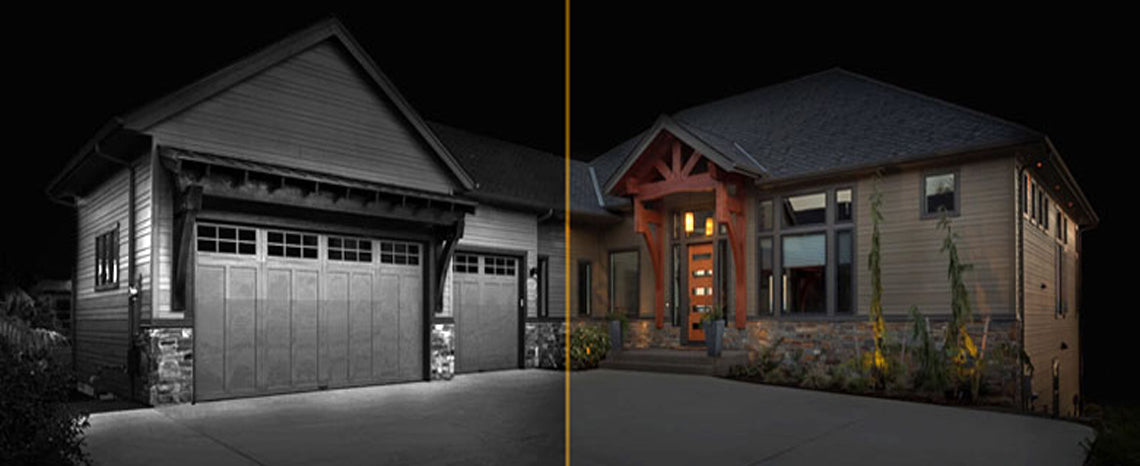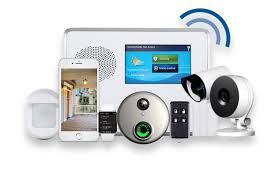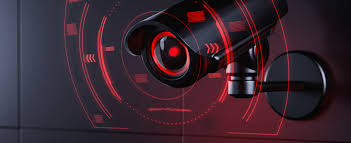advantage of these benefits. there are many factors to consider when making this personal choice for your home or business. Do the security cameras you are looking for have the best night vision? Should you buy wireless night vision security cameras? It is necessary to buy a night vision security camera if you want to monitor day and night (24/7) your house. Here is how to Choose the Best Night Vision Camera Option for Your Needs.
Night vision surveillance cameras enable you to protect your valuable assets by capturing video evidence of theft, vandalism, and any other unauthorized activity that occurs in low-light conditions where standard security cameras won't work.
Understanding Night Vision Capabilities
Night vision security cameras allow us to keep a close watch on our homes or businesses around the clock. But how can these security cameras is near to total darkness? There are three different methods: low-light, thermal imaging, and infrared illumination.
Low-Light
Low-light security cameras use image intensifiers which make the most of a faint light source. Because they are attuned to work with limited light sources, the pictures they produce in these settings are excellent. Some low-light cameras can even identify persons. Of the different methods employed, this seems to be the most affordable and is commonly used among homeowners.
Thermal Imaging
Thermal imaging technology uses temperature instead of light sources to produce images. This is based on the principle that objects radiate infrared due to temperature. This infrared energy, which is intensified with higher temperatures,
creates the thermal image. When objects are cold, the image produced is black, whereas hot objects produce white images. Some thermal cameras can produce color images, and can even detect objects from far distances. Unfortunately, thermal imaging has yet to gain mainstream popularity, but is rather useful in other settings.
Infrared
Home security cameras utilize infrared illumination and motion detection for effective night surveillance. When the security camera detects motion, the infrared illumination lights up and captures images. Because the infrared is only triggered by motion, this saves power. LED lights enhance performance to produce excellent black and white videos and images. Infrared security cameras are often used for outdoor home surveillance.
How does a night vision camera work?
Active night vision systems involve a camera and a bright light that emits near infrared radiation (which happens to be invisible to the naked eye). The camera is sensitive to this light and picks it up. Passive night vision systems use an image intensifier tube to amplify existing light.
Does night vision work in pitch black?
Night vision goggles using image enhancement technology collect all the available light, including infrared light, and amplify it so that you can easily see what's going on in the dark. Hot objects, including human bodies, emit some heat in the form of infrared light.Why do night vision cameras use infrared?
IR or night vision cameras use infrared light to illuminate images in the dark. We can't see it, but infrared light is actually all around us. ... The filter sits between the camera's lens and sensor, to allow visible light to pass through in the daytime, while blocking out infrared wavelengths.Does night vision work in total darkness?
The thermal imaging system can work in complete absence of light solely on the heat signature of objects with an above absolute zero temperature. ... So we can conclude that night vision goggles, cannot work in absolute darkness, they do need a light source, be it a weak one.
What is the difference between night vision and infrared?
Night vision detects visible light while infrared detects radiated heat. Night vision needs a little amount of light while infrared doesn't. ... So night vision is a technology allowing humans to 'see' near-infrared. It has been used in various forma since WW2.Is Night Vision legal?
Pennsylvania is not a state where predator hunters can use night vision and thermal imaging technology for nighttime predator hunting.
Important Night Vision Camera Features
The quality of your night vision security camera will be determined by these features.
IR Cut Filter
Night vision security cameras with infrared cut-off filters improve image clarity (especially in the daytime) and can prevent out of focus images. The way the filter works is quite simple, yet makes all the difference in video and image quality.
The IR cut filter is physically moved over the lens when daylight (white light) is detected to block out the IR light (that would affect the image quality). When the light levels drop to the point where night vision is necessary, the camera will move the lens out of the way. This “filter switch” allows the camera to pick up the same colors as the human eye to record natural looking images and results in better images overall. Without these filters, there’s no
way to prevent full-spectrum light, thus, daytime images would suffer from distortion and possible loss of focus.
Powerful Illumination (IR LEDs) Beam
Simply put – the more powerful the illumination, the better the night vision will be. For example, if you are looking
for outdoor cameras, you want cameras that produce something in the neighborhood of 100 ft. of IR illumination.
Infrared Illuminators
Before discussing IR illuminators, the Field of View (FOV) should be understood. If you think of it in terms of binoculars, the field of view is everything you see when looking into them. What you cannot see is outside of the field of view. Often times, the infrared illuminators in a night vision security camera don’t match its FOV, thus the
IR-beam is not illuminating the total area captured by the lens.
For the night vision cameras with an IR illuminator narrower than the FOV, you get a bright area in the middle of the image with the darkness growing as you get further from the center (ex. the spotlight effect). This is problematic as it makes it nearly impossible to identify areas outside of the center of the image. Finding a night vision camera with an IR illuminator that is equal to the FOV may cost more, but is well worth it.
How to Find a Best Night Vision Security Camera
1. Check the specifications to see if there is night vision in the list or IR distance info.
2. Ask the manufacturer to provide night vision video samples.
3. Watch night vision footage shared by any other customer.
4. Before buying the cameras, you shuold compare with the seller's reputation, including customer comments, feedback rating, and selling policies.
5. Read After-sales service and warrant.
Which CCTV camera is best for night vision?
Best Indoor Night Vision Security Camera:Nest Cam IQ Indoor
Best Indoor/Outdoor Night Vision Security Camera:Reolink Argus 2
Best Outdoor Night Vision Security Camera:Soliom S60 Solar Cam
Best Night Vision Security Camera: Lorex 4K IP Bullet Camera
Although seeking out specifications and ensuring that night vision cameras meet your expectations and requirements seems like a tedious task, it is well worth the security and peace of mind when it comes down to it. Choosing the appropriate Surveillance Night Vision Cam will depend on your individual needs. If you need help choosing a night vision security camera, please comment it.




Leave a comment
This site is protected by hCaptcha and the hCaptcha Privacy Policy and Terms of Service apply.